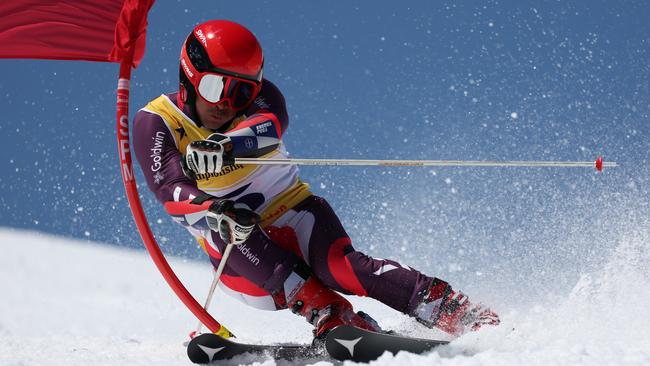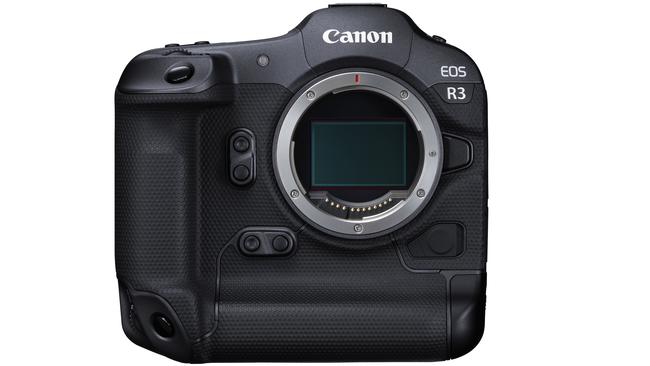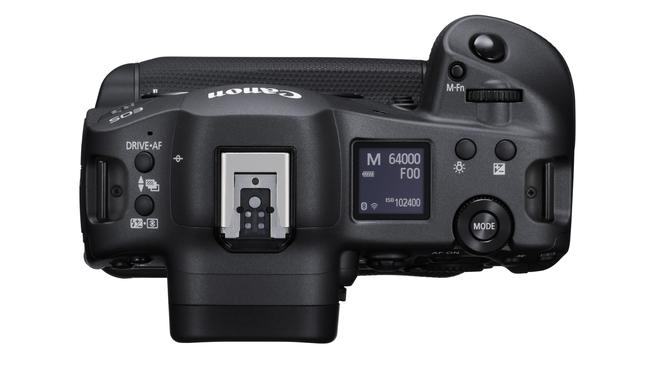Review: Canon EOS R3 is built for speed
If you capture action such as news, sport or birds in flight, Canon has a camera for you, and it’s fast.

If you capture action such as news, sport or birds in flight, Canon has a camera for you, and it’s fast. I’ve been out and about with the Canon EOS R3 which can snap 20 to 25 megabyte images at a rate of 30 frames per second, and process them in real time. That’s about 600 megabytes of image data processed per second.
Canon has brought back a modern form of a useful feature that adorned some film cameras in the mid 1990s: the ability of the optical viewfinder to track your eyeball and lock the focus on whatever specifically you are looking at. To lock, you press the shutter button halfway down.

When eye tracking, the viewfinder displays a little yellow circle so you will know what the camera thinks you are looking at.
The camera also has built-in object recognition to detect certain types of trackable objects. You choose between people, animals and vehicles through the camera menu.
The subject could be an athlete in a road race, a bird scurrying across a pathway, or a plane zooming overhead. The camera will continue to focus on that subject – you only need to keep it in frame and continue snapping. I had fun snapping these.
Click on the photos to enlarge them.



The fast frame rate, eye tracking autofocus and subject locking together arm photographers capturing fast action with extremely helpful tools.
In practice, I found eye tracking autofocus did work but it requires practice. It is essential that you first calibrate eye tracking to your eyes, and practice using it so that it works for you. I had a session tracking objects at home without snapping anything.
There’s one more benefit when tracking humans: at more than five metres, the camera locks onto the whole of a person, but at closer range, it locks onto their eyes which therefore look sharper. Viewers tend to hone in on the eyes in portrait shots.
The camera’s ability to process 30 full frame 14-bit raw images per second in real time is courtesy of a “stacked sensor” – the first Canon camera with it. The proximity of the camera’s sensor and memory card means data from the sensor can be processed and stored in memory very quickly. Canon says there is no buffering of data during continuous shooting, so therefore no lag.
If you prefer to line up shots using the back screen, Canon offers a large, high-resolution OLED display to make the experience worthwhile. You have the choice of viewing the image you’re about to shoot using the usual mirror and optics, or using a simulation as if it were a straight optical view.

You might want to disable this simulated feature at night, as you’ll miss out on adjustments the camera would normally make to the screen output, such as a lighter image when taking low light shots. The OLED screen boasts a high dynamic range (HDR) so you can see more details in the image shadows and highlights.
Canon has eliminated the instantaneous blackout you’ll sometimes see between shots when shooting continuously. You can also silence camera shooting so that it operates without noise at public events.

The EOS R3 achieves its 30 frames per second rate when you invoke the faster electronic shutter. Past electronic shutters have caused rolling shutter distortion in photos with the mixing of images from consecutive frames. Canon says this camera has all but eliminated the problem, so you don’t need to select the slower mechanical shutter which decreases the frame rate to around 12fps.
Canon says flash sync is possible with the electronic shutter, which supports up to a 1/64,000th of a second shutter speed.
This camera has a largish frame with a magnesium alloy body and is on the heavy side to hold, especially when you add one of Canon’s big RF mount lenses, such as the 600mm that came with my review kit that I used in Sydney Park. Fortunately shooting is aided by five-axis image stabilisation, necessary when you’re trying to shoot moving objects in lower light.

The EOS R3 sits with the EOS-1D X Mark III at the top of Canon’s professional camera range. Canon says the camera’s toughness is similar to this series.
If speed isn’t the priority, you could opt for the EOS R5 which is more a general purpose professional shooter for weddings and other events, and for capturing landscapes. It has the added attraction of supporting 8K video.
The EOS R3 proved easy to operate and has a user-friendly menu for accessing its wide array of features. Price: $8599 rrp (body only) with a five-year warranty. The 100-400mm, 600mm and 24-70mm RF lenses cost $1245, $1409 and $4089 respectively. More details are here.


To join the conversation, please log in. Don't have an account? Register
Join the conversation, you are commenting as Logout